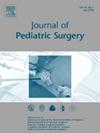The Prognostic Impact of Defect Size Based on Body Surface Area in Omphaloceles
IF 2.4
2区 医学
Q1 PEDIATRICS
引用次数: 0
Abstract
Introduction
This study addresses the existing gaps in understanding the cases with omphalocele by investigating the potential prognostic impact of the ratio between omphalocele diameter-and -body surface area (BSA), particularly in premature and low birth weight neonates.
Material and methods
Data retrieved from the hospital files of 25 patients with omphalocele related to their gestational histories, demographics, anthropometric data, comorbidities, defect diameters, and prognoses were retrospectively analyzed. BSA was calculated using the Haycock Formula. Binary logistic regression analysis performed identified mortality-associated factors.
Results
Most (84 %) of the patients with omphalocele, required mechanical ventilation, and the median hospital stay was 19 days. There was no significant correlation between defect diameter or defect diameter-to-BSA ratio and hospital stay. Mortality rate in these patients was 24 %, with a significantly higher mean (±SD) defect diameter-to-BSA ratio in non-survivors compared to survivors (467.9 ± 54.8 vs. 283.1 ± 24.8; p = 0.002). Logistic regression analysis identified the defect diameter-to-BSA ratio as a significant predictor of mortality (p = 0.023, Exp(B) = 1.038, 95 % CI: 1.005–1.072). Other variables, including defect size, cardiac anomalies, and solid organ presence in the sac, were not significant predictors.
Conclusion
This study underscores the superior prognostic value of the defect diameter-to-BSA ratio for omphalocele patients, surpassing conventional markers such as defect diameter, cardiac anomalies, and the presence of solid organs in the sac.
基于体表面积的颅骨缺损大小对预后的影响
本研究通过调查脐膨出直径与体表面积(BSA)之比对早产儿和低出生体重新生儿预后的潜在影响,解决了目前对脐膨出病例的理解差距。材料和方法回顾性分析25例脐膨出患者的妊娠史、人口统计学、人体测量数据、合并症、缺损直径和预后。BSA采用Haycock公式计算。对确定的死亡相关因素进行二元logistic回归分析。结果大多数脐膨出患者(84%)需要机械通气,中位住院时间为19天。缺损直径或缺损直径-脑白蛋白比值与住院时间无显著相关。这些患者的死亡率为24%,与幸存者相比,非幸存者的缺陷直径与bsa的平均(±SD)比明显更高(467.9±54.8比283.1±24.8;p = 0.002)。Logistic回归分析发现,缺陷直径与bsa比值是死亡率的重要预测因子(p = 0.023, Exp(B) = 1.038, 95% CI: 1.005-1.072)。其他变量,包括缺陷大小、心脏异常和囊内实体器官的存在,都不是显著的预测因子。结论本研究强调了脐膨出患者的缺损直径与脑白蛋白比值优于常规指标,如缺损直径、心脏异常和囊内实体器官的存在。
本文章由计算机程序翻译,如有差异,请以英文原文为准。
求助全文
约1分钟内获得全文
求助全文
来源期刊
CiteScore
1.10
自引率
12.50%
发文量
569
审稿时长
38 days
期刊介绍:
The journal presents original contributions as well as a complete international abstracts section and other special departments to provide the most current source of information and references in pediatric surgery. The journal is based on the need to improve the surgical care of infants and children, not only through advances in physiology, pathology and surgical techniques, but also by attention to the unique emotional and physical needs of the young patient.

 求助内容:
求助内容: 应助结果提醒方式:
应助结果提醒方式:


